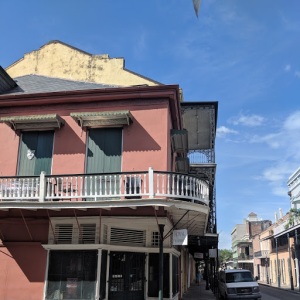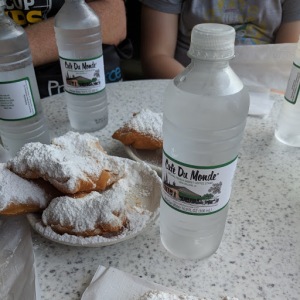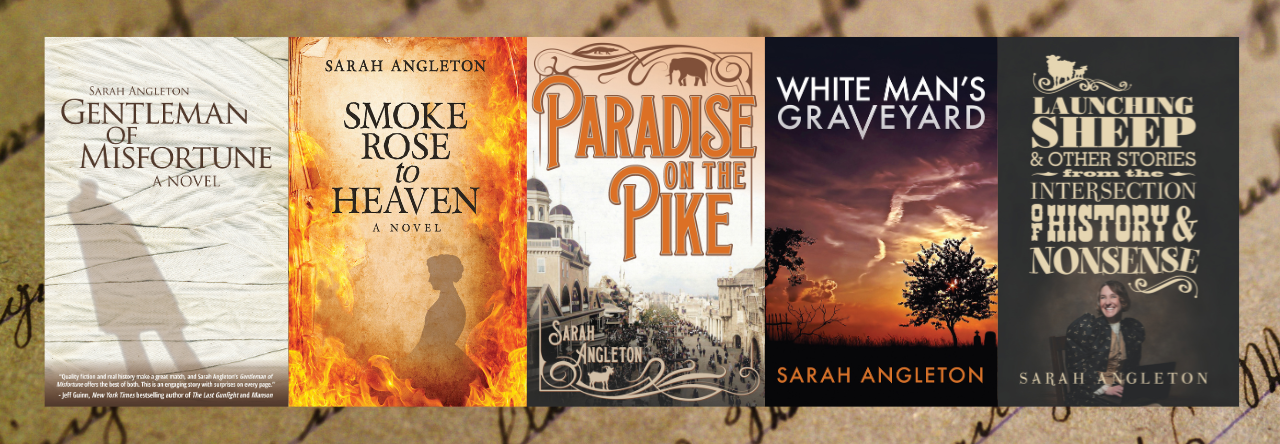Hello from summer break!
As I mentioned a few weeks ago, I am going to do my best throughout these summer months to post in this space at least every couple of weeks. The last two have been busy. My kids are now eleven and fourteen, which means two things. First, they don’t really need me to entertain them all the time, but second, they do need me to drive them places. All. The. Time.
We’ve also been adventuring as a family when we can squeeze it in. Last week, we loaded up the family truckster and embarked on a quest to strike another state off the list for the kids by spending a couple days in New Orleans, Louisiana.

And this is the point at which any serious history enthusiast and blogger would impress upon you that the National World War II Museum in New Orleans is amazing and is well worth the trip. She’d surely mention the care with which a variety of perspectives on the war are portrayed though artifacts, interactive video, and personalized stories throughout the many visually stunning exhibit halls. She might even attempt to communicate the overwhelming emotional response visitors have to this museum, including shame, sorrow, joy, and pride.
But this isn’t that kind of blog. Instead, I’m going to write about cocktails.
Because after visiting the World War II Museum we decided to take a carriage tour of the French Quarter and learned from our wonderful guide that the Big Easy is also sometimes referred to as “the cradle of civilized drinking.”
If, like me, you’ve ever spent any time on Bourbon Street, then you might, like me, question the use of the word, “civilized,” but what is meant is that New Orleans considers itself the original home of the cocktail.
The story, as I heard it, involves a man by the name of Antoine Peychaud who in 1841, opened Pharmacie Peychaud in order to sell his special herbal remedy cleverly called Peychaud’s Bitters. Like Mary Poppins a century later, the druggist discovered that a spoonful of sugar can be helpful when getting people to take their medicine, especially when combined with water and spirits and served in an egg cup called in French a coquetier.

With the increasing importance of the coffee house social scene throughout nineteenth century America, and the simultaneous discovery that without a large dose of cream, twenty-seven packets of sugar, and a Starbucks logo, coffee is actually kind of gross, Peychaud’s concoction in a coquetier became the cocktail. This, it turned out, was a much more entertaining beverage to enjoy with a gathering of know-it-all friends sharing silly stories from history.
And while it does seem there is some truth to this one, like most silly stories from history, it has been a little embellished by carriage tour guides over the years. New Orleans is definitely the original home to many cocktails, including the hurricane and a bunch I’ve never heard of because I drink cocktails almost as often as I drink coffee (which is almost never).

The city is not, however, the originator of the word “cocktail,” which appeared in print in the US for the first time in New York as early as 1803 and according to cocktail historian David Wondrich, probably got its start in England where it had more to do with perking up the back end of a horse than it did with raising the spirits of a self-medicating New Oreleander New Orleanite New Orleanan citizen of New Orleans. The cradle of civilized drinking is also probably not the home of the original cocktail party, which according to Wondrich, might have been hosted by George Washington. But that’s a rabbit hole for another day.
Still that doesn’t stop the rumor that tour guides throughout the city work hard to perpetuate. New Orleans is even the home the Museum of the American Cocktail, where I suspect you can learn all about Antoine Peychaud. I wouldn’t know, because this history blogger spent most of her time at National World War II Museum. And it really was well worth the visit.

I knew the moment I saw the title that this post was quickly going to be sloshing around with a drink its hand.
And what a great image that is! You must be a writer. 😉
No, but I play one on TV. 😂
I’ve never been to New Orleans! Someday, very soon, I must correct that. And yes – I WILL visit that museum.
You would love it!
I can well understand that touring the National World War II Museum with a Bloody Mary in the hand might be construed as bordering on the offensive. But if I ever have the good fortune to go to New Orleans I shall attempt to visit both places separately.
Yes, I don’t think I would recommend visiting the museum while drinking. It’s already a pretty emotional experience. Also, there are catwalk-like structures for viewing some of the planes, a little dizzying even while sober.
I wanted to mention I’ve made one visit to NOLA for a couple of days and loved it! So much to see and do-and so much history. I’d go back in a heartbeat, though not in the summertime!
It wasn’t too bad when we were there. I’d been a couple of times in college, just long enough to wander the French Quarter and get nervous as the sun went down on Bourbon Street. This was the first visit in which I had a little time to appreciate some of the history. Such a unique city!